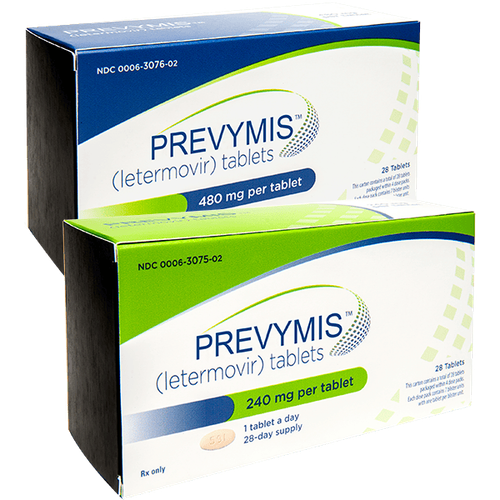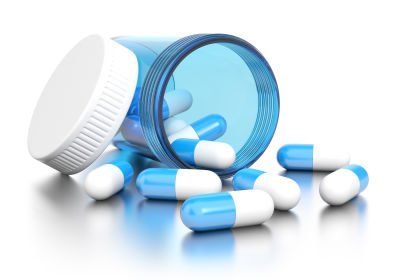This is an automatically translated article.
Lamivudin 100mg is the preferred drug class indicated for the treatment of chronic hepatitis B virus in patients with evidence of hepatitis B virus replication and in combination with Zidovudine for the treatment of HIV in adults. So what is the right way to drink? What points should be considered and noted when taking this drug? The following article will help you better understand the uses of Lamivudin 100.
1. What are the uses of Lamivudin 100mg?
1.1. What is Lamivudine 100? Lamivudin 100 belongs to the group of drugs to treat parasites, anti-infectives, antivirals and antifungals with the main ingredients including:
Main active ingredients: Lamivudin with a content of 100mg Excipients: Lactose monohydrate, Sodium starch glycolate, Avicel M101, Kollidon K30, Talc, Magnesium stearate, Aerosil, HPMC 606, HPMC 615, PEG 6000, Titanium dioxide, Iron oxide red, Iron oxide yellow. The drug is produced in the form of oval film-coated tablets, 10 tablets per blister, 3 blisters per box and is recommended for use by people 16 years of age and older.
1.2. What does Lamivudine 100 do? Lamivudin is an antiviral drug, with activity against hepatitis B virus in all cell lines tested and in experimentally infected animals.
Lamivudin Hasan 100 is prescribed by doctors to treat chronic hepatitis B in adults in the following cases:
Compensated cirrhosis with evidence of viral replication, alanine aminotransferase (ALT) levels ) is persistently elevated in serum and histological evidence of active hepatitis and/or cirrhosis. Initiation of lamivudine therapy should only be considered when the use of an alternative antiviral agent (with a higher genetic barrier) is not available or appropriate. Decompensated cirrhosis when combined with a second agent that is not cross-resistant to lamivudine.
2. Usage of Lamivudin 100
2.1. How to use Lamivudin 100 Lamivudin and combination products are used orally, on an empty stomach or at fullness (taken at fullness slows absorption). Patients must take the right dose, at the right time. Lamivudine should always be used in combination with at least one other antiretroviral drug. Patients should not stop taking the drug without their doctor's instructions, because of the risk of worsening hepatitis. Once the medication is stopped, the doctor will monitor the patient for at least 4 months to check for any problems (taking blood samples to check for elevated liver enzyme levels - which can indicate liver damage). Medicines should not be disposed of in sewage or household waste. Ask your pharmacist for advice on how to quit smoking. These measures will help protect the environment. 2.2. Dosage of Lamivudin 100 The recommended adult dose is 1 tablet (100 mg) once daily. In patients with decompensated liver disease, Lamivudine should always be used in combination with a second agent that is not cross-resistant with Lamivudine to reduce the risk of drug resistance and achieve rapid viral clearance.
For HBeAg (+) chronic hepatitis B patients without cirrhosis, treatment should be initiated for at least 6-12 months after confirmation of HBeAg (-) seroconversion. and HBV-DNA (-) with the presence of HBeAb) to limit the risk of viral relapse, or until HBsAg seroconversion or loss of efficacy occurs. Serum ALT and HBV-DNA levels should be monitored frequently after discontinuation of therapy to detect late viral relapse. In chronic hepatitis B patients with HBeAg (-) (prenuclear mutation) without cirrhosis, treatment should be continued at least until HBs seroconversion occurs or there is evidence of loss of efficacy. treat. With long-term treatment, regular reevaluation is recommended to confirm that continuation of the selected therapy is still appropriate for the patient. In patients with decompensated liver disease or cirrhosis and those receiving a liver transplant, discontinuation of treatment is not recommended. If lamivudine is discontinued, the patient should be periodically monitored for evidence of recurrent hepatitis. Clinical resistance
Patients with chronic hepatitis B with HBeAg(+)/(-), YMDD mutant HBV (tyrosin-methionin-aspartate-aspartate) may have reduced response to lamivudine, as indicated by elevated HBV-DNA and ALT levels from previously treated levels. To reduce the risk of drug resistance in patients receiving lamivudine alone, addition or switching to an alternative that is not cross-resistant to lamivudine based on treatment guidelines should be considered if serum HBV-DNA persists. detected during or after 24 weeks of treatment. In the treatment of patients coinfected with HBV/HIV and being treated with or planning to receive lamivudine or lamivudine-zidovudine combination therapy, the dose of Lamivudine 100 prescribed for HIV infection should be maintained (usually dose 150mg x 2 times/day in combination with other antiretroviral drugs). Dosage in Special Clinical Populations
Patients with Renal Impairment: Serum lamivudine concentrations (AUC) are generally increased in patients with moderate to severe renal impairment due to decreased renal clearance. Dose reduction is required for patients with creatinine clearance (ClCr) < 50 ml/min. For doses <100mg, Lamivudine oral solution should be used to facilitate dosing.
| ClCr (ml/phút) | Liều khởi đầu | Liều duy trì/ngày |
| 30 - <50 | 100 mg | 50 mg |
| 15 - <30 | 100 mg | 25 mg |
| 5 - <15 | 35 mg | 15 mg |
| <5 | 35 mg | 10 mg |
Patients with hepatic impairment: Data obtained in patients with hepatic impairment, including patients with end stage liver failure awaiting liver transplantation, indicate that the pharmacokinetics of Lamivudine hasan 100 mg are not significantly affected by other indications. liver dysfunction number. Therefore, no dose adjustment is required for patients with hepatic impairment unless renal impairment is present. Elderly: Impaired renal function does not have a clinically significant effect on lamivudine exposure, unless the patient has a creatinine clearance < 50 ml/min. Children: The safety and effectiveness of Lamivudine in infants, children, and adolescents < 18 years of age have not been studied. The use of this drug is not recommended. If you forget a dose, take it as soon as possible. However, if it is almost time for your next dose, skip the missed dose and take your next dose at the scheduled time. Note that double the prescribed dose should not be taken.
In addition, very little is known about overdose, although in overdose, no clinical signs or symptoms were observed, otherwise blood tests were normal. There is no antidote. Lamivudine can be eliminated through hemodialysis.
3. Contraindications of Lamivudin 100
Patients who are allergic to the main active ingredient Lamivudin or any of the excipients listed above of Lamivudin 100
4. Note when using Lamivudin 100
4.1. Precautionary statements Lactic acidosis, hepatomegaly and severe steatosis: Particular caution should be exercised when lamivudine is administered to patients with known risk factors associated with liver disease; however, patients who are not at risk still need attention. Important differences between Lamivudine-containing products, HIV testing, and the risk of developing a drug-resistant mutant form of HIV. The formulation and content of lamivudine in the drug are not suitable for the treatment of patients infected with both HBV and HIV. Increased disease after hepatitis therapy: There is an increase in disease after stopping lamivudine (elevation of serum ALT, re-emergence of HBV DNA after discontinuation of therapy). Although most events appear to be self-limiting, a few fatal cases have been reported. Pancreatitis: Several cases of pancreatitis have been reported following treatment with Lamivudin, especially in HIV-infected pediatric patients who have been previously treated with Nucleotide. 4.2. Precautions for use During treatment, patients need to be monitored, reviewed and evaluated regularly. Following discontinuation of lamivudine, patients may develop recurrent hepatitis, which may be more severe in patients with decompensated liver disease. Therefore, periodic clinical monitoring and evaluation of liver function tests (ALT and bilirubin levels) should be performed for a minimum of 4 months for evidence of recurrent viral hepatitis. The safety and efficacy of Lamivudine have not been established in patients younger than 2 years of age, liver transplant patients, patients with both HBV and HCV infections, hepatitis delta or HIV. Lamivudine should not be used during pregnancy unless the benefits outweigh the risks. Pregnant patients who use Lamivudine or while using Lamivudine become pregnant must notify their doctor immediately. Women who are being treated with Lamivudine should not breast-feed. 4.3. Drug Interactions Lamivudine and zalcitabine, lamivudine and cladribine should not be used in combination. Lamivudin does not interact with Cytochrome P450. Drug interactions occur only with Ganciclovir (weakening anti-HIV activity) and Trimethoprim . Emtricitabine: Because of these similarities, lamivudine should not be used in combination with other Cytidine analogues such as Emtricitabine. Sorbitol: When possible, avoid prolonged combination of Lamivudin with drugs containing Sorbitol or other osmotic Polyalcol/Monosaccharide alcohols (Xylitol, Mannitol, Lactitol, Maltitol). Consider more frequent monitoring of HBV viral load when long-term combination therapy is unavoidable.
5. Side effects of Lamivudin 100
Common
Central nervous system: Headache, irritability, insomnia, fatigue, pain, dizziness, fever, chills, depression,. Gastrointestinal: Nausea, vomiting, anorexia, abdominal pain, diarrhea, dyspepsia, increased amylase. Neuro-muscular and skeletal: Myalgia, arthralgia, peripheral neuropathy, paresthesia. Respiratory: cough. Skin: Erythema. Hematology: Anemia, neutropenia, Liver: Increased ALT, AST. Uncommon
Gastrointestinal: Pancreatitis. Hematology: Platelet decreased. Liver: Bilirubin increased.
6. How to store Lamivudin 100
Store Lamivudin Hasan 100 in a cool, dry place in its original packaging. The temperature should not exceed 30°C. Avoid direct sun exposure. Keep out of reach of children and pets.
Please dial HOTLINE for more information or register for an appointment HERE. Download MyVinmec app to make appointments faster and to manage your bookings easily.













